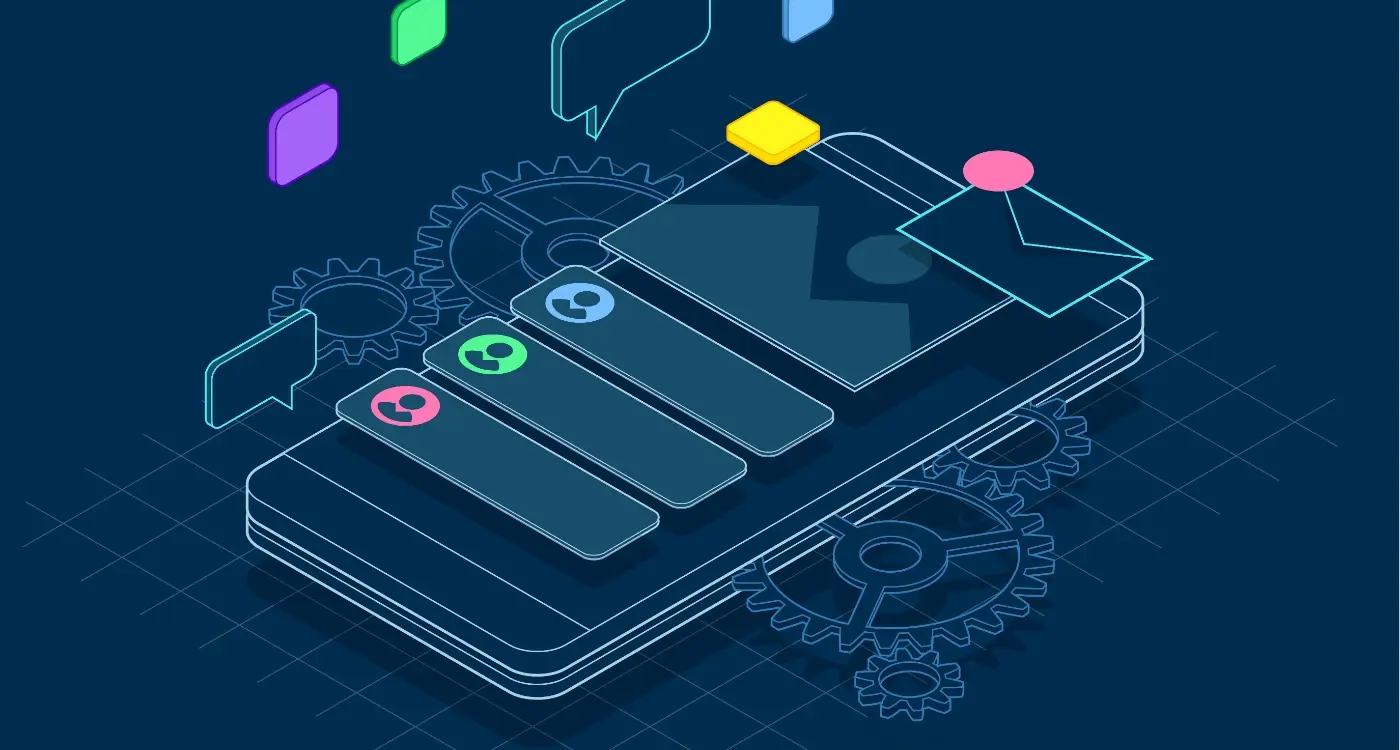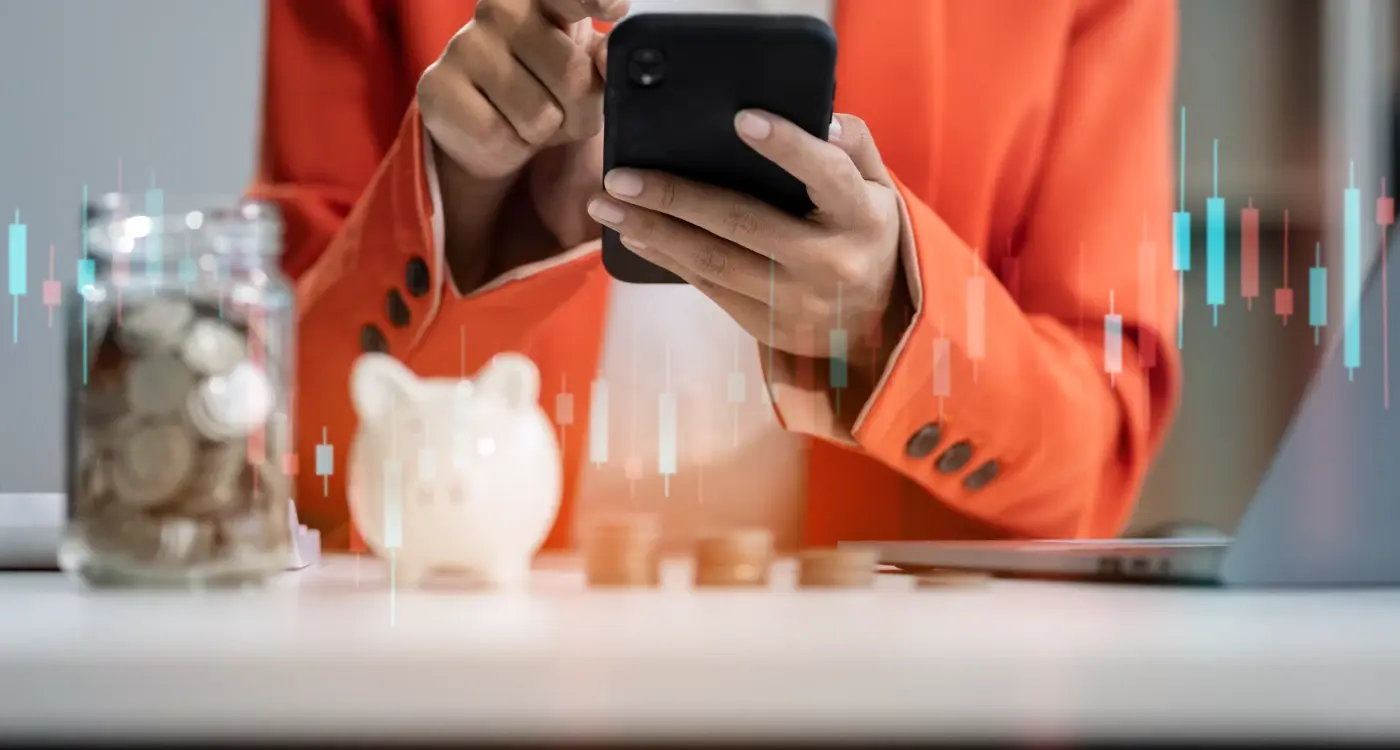How Much Does It Cost To Build A Dating App Like Bumble?
Building a dating app like Bumble can cost anywhere from £50,000 to £500,000—and that's just the beginning. The massive variation in price isn't just about features; it's about the complex web of technical challenges, ongoing costs, and strategic decisions that most people never see coming. When entrepreneurs ask me about creating a social app, they're often focused on the flashy front-end features that users interact with daily, but the real cost drivers are hiding beneath the surface.
What makes Bumble's development particularly expensive isn't just the swiping mechanism or chat functionality—it's the sophisticated matching algorithms, real-time messaging infrastructure, and robust security systems that keep millions of users safe and engaged. These aren't simple features you can bolt onto a basic app; they require careful planning, experienced developers, and significant ongoing investment to maintain and scale.
The biggest mistake I see clients make is underestimating the complexity of building a social platform that needs to handle thousands of concurrent users from day one
Throughout this guide, we'll break down exactly where your money goes when building a Bumble-style dating app. From the core features that drive up development costs to the hidden expenses that catch founders off guard, you'll get a realistic picture of what it takes to compete in the modern dating app market. Whether you're a startup founder or an established business looking to enter the social app space, understanding these costs upfront will save you from expensive surprises down the road.
What Makes Bumble Different From Other Dating Apps
When I first started building dating apps, most followed the same pattern—swipe, match, wait for someone to message. Then Bumble came along and flipped the script completely. The app's biggest difference? Women make the first move. That's it. Simple concept, but it changed everything about how dating apps work.
This women-first approach isn't just a marketing gimmick—it shapes the entire user experience and creates unique technical challenges. Unlike Tinder where anyone can message after matching, Bumble has a 24-hour timer that starts ticking once two people match. If the woman doesn't send a message within that timeframe, the match disappears forever. For same-sex matches, either person can start the conversation.
Key Features That Set Bumble Apart
- Women initiate conversations in heterosexual matches
- 24-hour time limit to start chatting
- Three different modes: Date, BFF, and Bizz
- Photo verification system to reduce fake profiles
- Ability to extend matches for premium users
- SuperSwipe feature to show extra interest
The app also expanded beyond dating with BFF mode for finding friends and Bizz for professional networking. This multi-purpose approach means you're not just building one app—you're creating three different experiences that share the same core technology but serve completely different needs.
The Main Features That Drive Development Costs
When building a social app like Bumble, there are specific features that will eat up most of your budget—and I mean most of it. User profiles with photo uploads come first; this isn't just about storing a few pictures, it's about image compression, secure storage, and making sure everything loads quickly on different devices. Then there's the matching algorithm, which is the heart of any dating app and requires serious backend development work.
Real-time messaging is another big cost driver. People expect instant notifications and seamless conversations, which means implementing websockets and push notification systems. The geolocation feature that shows users nearby matches? That's not cheap either, especially when you factor in privacy controls and location accuracy.
Advanced Features That Push Costs Higher
Video calling capabilities, user verification systems, and premium subscription features all add significant development time. The reporting and safety features—blocking users, content moderation—are absolutely necessary but require careful planning and ongoing maintenance costs.
Start with core features first (profiles, basic matching, messaging) and add advanced features in later updates. This approach helps manage your initial development cost whilst getting your app to market faster.
Payment integration for premium features and robust admin panels for content management round out the expensive features list. Each of these requires different technical expertise, which affects both timeline and budget.
How Much Does Each Feature Cost To Build
Right, let's talk numbers. I know this is what you've been waiting for—the actual costs of building each feature that makes a dating app like Bumble tick. These figures are based on working with a skilled development team in the UK, and yes, they might make your eyes water a bit!
Core Features Breakdown
User registration and profile creation will set you back around £8,000-£12,000. This includes photo uploads, bio sections, and all those preference settings that help people find their perfect match. The swiping mechanism—the heart of any dating app—costs between £15,000-£25,000 to build properly. Trust me, making it feel smooth and responsive takes serious engineering work.
| Feature | Cost Range | Development Time |
|---|---|---|
| User Registration & Profiles | £8,000 - £12,000 | 3-4 weeks |
| Swiping & Matching | £15,000 - £25,000 | 6-8 weeks |
| Messaging System | £12,000 - £20,000 | 4-6 weeks |
| Location Services | £6,000 - £10,000 | 2-3 weeks |
| Push Notifications | £4,000 - £8,000 | 1-2 weeks |
Premium Features
The messaging system costs £12,000-£20,000 and that's where things get tricky—real-time chat, message encryption, and photo sharing all need to work flawlessly. Location-based matching adds another £6,000-£10,000, whilst push notifications (the ones that bring users back) cost around £4,000-£8,000.
The Technical Challenges Of Building A Social Dating App
Building a dating app like Bumble isn't just about creating pretty profiles and a swipe feature—there are some serious technical hurdles that can really drive up your development cost. Real-time messaging is probably the biggest challenge you'll face. When two people match, they expect to chat instantly without any delays or glitches. This means your app needs to handle thousands of simultaneous conversations without breaking a sweat.
Location-based matching adds another layer of complexity. Your app has to constantly track users' locations, calculate distances between potential matches, and update results in real-time. That's a lot of data processing happening behind the scenes! Then there's the challenge of scaling—what happens when your user base grows from hundreds to millions? Your servers need to handle the increased load without slowing down.
Security And Privacy Concerns
Dating apps handle incredibly sensitive personal information, which means security can't be an afterthought. You'll need robust encryption, secure payment processing for premium features, and protection against fake profiles and bots.
The average social dating app processes over 50,000 swipes per minute during peak hours, which requires serious backend infrastructure
Photo verification and content moderation present their own challenges too. Your app needs to automatically detect inappropriate content whilst ensuring genuine users don't get falsely flagged. These technical requirements significantly impact your development timeline and budget.
Hidden Costs Most People Don't Think About
When clients ask me about building a dating app, they're usually focused on the obvious costs—development, design, maybe some marketing. But there's a whole bunch of expenses that catch people off guard, and trust me, they can really add up quickly.
Legal compliance is probably the biggest surprise. Dating apps handle sensitive personal data, which means you'll need proper privacy policies, terms of service, and potentially legal reviews in multiple countries. GDPR compliance alone can cost thousands if you're targeting European users. Then there's age verification systems, which are becoming mandatory in many regions.
The Ongoing Expenses That Keep Coming
Server costs scale dramatically as your user base grows. What starts as £100 per month can easily become £5,000 when you have thousands of active users all swiping and messaging simultaneously. Image storage is another killer—dating apps are photo-heavy, and cloud storage costs mount up fast.
Don't forget about third-party services either. Payment processing for premium features, SMS verification, push notifications, and analytics tools all come with monthly fees. Most apps also need content moderation services to keep inappropriate content off the platform.
- Legal compliance and privacy policies
- Scaling server and storage costs
- Third-party service subscriptions
- Content moderation tools
- Security audits and updates
- App store fees and commissions
Security audits are non-negotiable for dating apps—you're dealing with personal data that hackers love to target. Budget for regular security reviews and penetration testing. It's not cheap, but it's cheaper than a data breach.
Ways To Reduce Your Development Budget
Building a social app like Bumble doesn't have to break the bank—but it does require smart planning and some tough decisions. Over my years working with startups and established brands, I've seen plenty of projects spiral out of control budget-wise, and it's usually because teams try to build everything at once.
The secret to keeping costs down is starting with what I call the "dating app essentials". Think user profiles, basic matching, and messaging. That's it. Skip the video calls, advanced filters, and premium features for now. You can always add them later once you've got real users and (hopefully) some revenue coming in.
Start with iOS or Android first, not both. Pick the platform where your target audience spends most of their time—you'll cut development costs by 40-50% right off the bat.
Smart Ways to Cut Costs
- Use existing SDKs for features like push notifications and user authentication
- Build a simple admin panel instead of a complex dashboard
- Start with basic photo uploads before adding fancy editing tools
- Use template designs and customise them rather than starting from scratch
- Consider hybrid development frameworks like React Native for cross-platform apps
The biggest mistake I see is trying to compete with Bumble's current feature set. Remember, they didn't launch with everything they have today—they built up to it over years of user feedback and millions in funding.
Timeline And Team Size For A Bumble-Style App
Building a dating app like Bumble isn't something you can knock out over a weekend—we're talking about a proper 6-12 month development cycle for a quality product. The timeline depends largely on how many features you want to include from day one and whether you're building for iOS, Android, or both platforms simultaneously.
For the team size, you'll need at least 5-7 people working on this project. That includes a project manager, two mobile developers (one for each platform), a backend developer, a UI/UX designer, and a quality assurance tester. Many agencies will also throw in a DevOps engineer to handle all the server setup and deployment stuff.
Breaking Down The Development Phases
The first 2-3 months are all about planning and design—creating wireframes, designing the user interface, and setting up the technical architecture. Then you've got 4-6 months of actual development work, where the magic happens. The final 1-2 months are for testing, bug fixes, and getting everything ready for the app stores.
If you want to speed things up, you can always add more developers to the team, but there's a limit to how much that helps. Too many cooks in the kitchen and all that! Most experienced agencies have found that sweet spot of team size that balances speed with quality.
Conclusion
Building a social app like Bumble isn't cheap—I won't sugarcoat that for you. We're talking about anywhere from £150,000 to £500,000 depending on what features you want and how polished you need everything to be. The cost comes down to those core features that make dating apps work: user profiles, matching algorithms, real-time messaging, and all the safety features that keep people coming back.
What catches most people off guard are the ongoing costs. You're not just paying for development once and walking away. There's server hosting, app store fees, maintenance, updates, and all those little things that add up month after month. Plus, if you want to compete with Bumble, you need features like video calling, premium subscriptions, and robust moderation systems—all of which push that price tag higher.
The smart approach? Start with a minimum viable product that covers the basics and build from there. You can always add premium features later once you've proven the concept works. Focus your budget on getting the matching system right and making sure your app doesn't crash when people are trying to have conversations. Everything else can wait.
Remember, the cost isn't just about the money—it's about building something people actually want to use every day.
Share this
Subscribe To Our Learning Centre
You May Also Like
These Related Guides

What Makes Some Apps Cost 10x More to Build?

How Do You Protect Your Mobile App Investment Budget?



